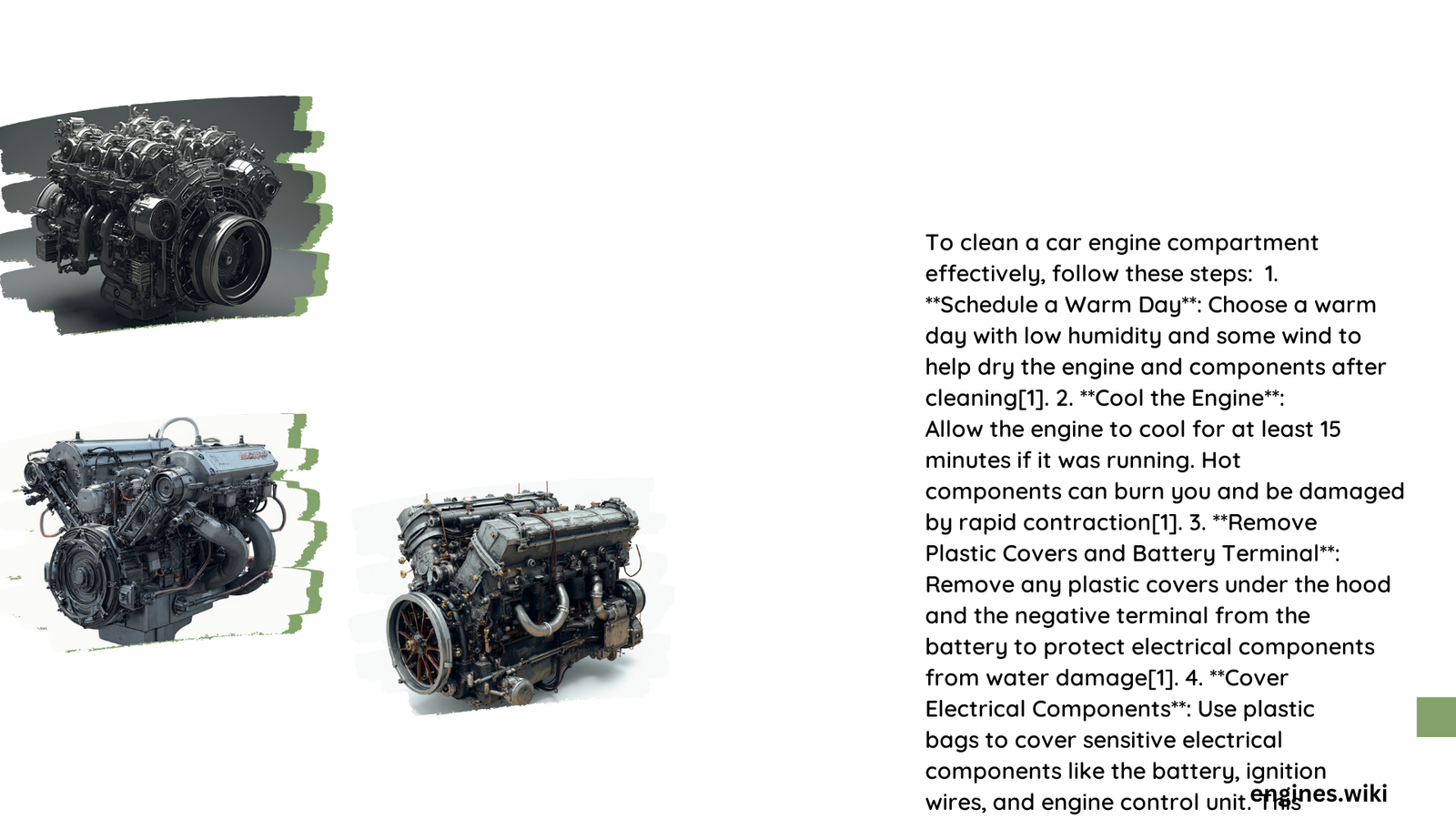Maintaining a clean engine compartment is crucial for your vehicle’s performance and longevity. A pristine engine bay not only looks impressive but also helps mechanics easily identify potential issues, prevents corrosion, and allows better heat dissipation. This comprehensive guide will walk you through professional-grade techniques to safely and effectively clean your car’s engine compartment, ensuring optimal performance and aesthetic appeal.
Why Clean Your Engine Compartment?
Cleaning your engine compartment offers multiple benefits:
| Benefit | Description |
|---|---|
| Performance | Removes debris that can impact engine cooling |
| Diagnostics | Allows easier visual inspection of components |
| Longevity | Prevents corrosion and buildup of harmful substances |
| Resale Value | Demonstrates meticulous vehicle maintenance |
What Tools Do You Need?

Essential tools for engine compartment cleaning include:
- Degreaser
- Soft-bristled brush
- Microfiber towels
- Plastic bags
- Compressed air or leaf blower
- Garden hose
- Protective gloves
How Prepare Engine for Cleaning?
Cool Down the Engine
- Wait 15-30 minutes after driving
- Ensure engine temperature is ambient
- Work in a well-ventilated area
- Choose a warm, low-humidity day
Protect Electrical Components
- Disconnect negative battery terminal
- Cover sensitive electronics with plastic bags
- Use waterproof covers for exposed wiring
What Degreasing Techniques Work Best?
Selecting the Right Degreaser
Recommended degreasers:
– Simple Green
– Koshemi GS
– Specialized automotive degreasers
Application Process
- Dilute degreaser according to manufacturer instructions
- Spray evenly across engine compartment
- Allow 3-5 minutes for solution to break down grime
- Use soft brush for stubborn areas
- Rinse thoroughly with low-pressure water stream
How Avoid Common Cleaning Mistakes?
Critical Precautions
- Never use high-pressure washers
- Avoid soaking electrical components
- Use gentle scrubbing motions
- Ensure complete drying after cleaning
Pro Tips for Engine Bay Detailing
Post-Cleaning Maintenance
- Apply protective silicone-based dressing
- Inspect for any potential leaks or wear
- Reconnect battery terminal
- Run engine briefly to ensure proper functionality
Frequency of Cleaning
| Vehicle Type | Recommended Cleaning Frequency |
|---|---|
| Daily Driver | Every 3-4 months |
| Performance Vehicle | Monthly |
| Vintage/Collector Car | Quarterly |
Safety Recommendations
- Wear protective gloves
- Use eye protection
- Work in a well-ventilated area
- Have proper lighting
- Keep fire extinguisher nearby
Final Thoughts
A clean engine compartment reflects your commitment to vehicle maintenance. By following these professional techniques, you’ll not only enhance your car’s appearance but also contribute to its long-term performance and reliability.
